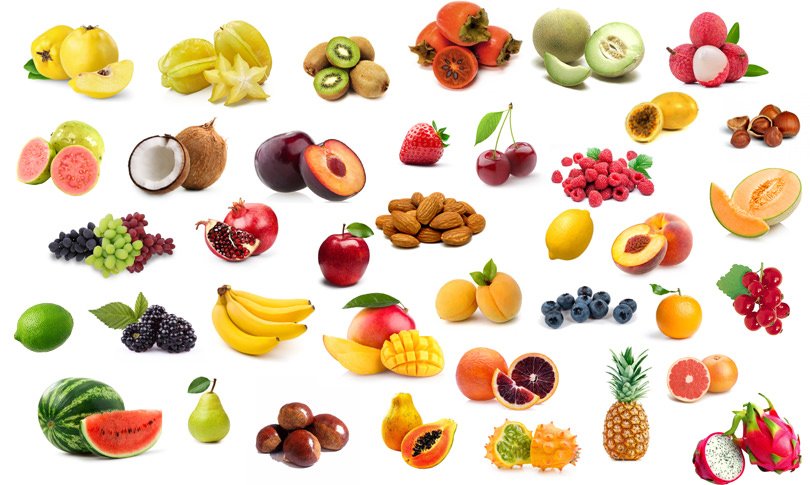Welcome to our comprehensive guide on how to talk about fruits and vegetables in Spanish! Whether you’re a beginner looking to learn the vocabulary or an experienced Spanish learner seeking to expand your language skills, this article will provide you with the necessary tools to confidently navigate Spanish marketplaces and menus.
if your are taking Spanish classes in Malaga you might find this very helpful. Be ready to expand your knowledge and start creating new expressions to share with locals!
By the end of this guide, you’ll be equipped with the vocabulary for fruits and vegetables in Spanish, allowing you to communicate effectively in Spanish-speaking countries. From shopping for fresh produce to enjoying the culinary delights of Spanish cuisine, this knowledge will enhance your language skills and open up a world of flavors.
Key Takeaways:
- Learning the vocabulary for fruits and vegetables is essential for effective communication in Spanish-speaking countries.
- Familiarize yourself with common fruits and vegetables in Spanish to build your language skills.
- Practice using fruits and vegetables in sentences to improve your understanding and fluency.
- Be aware of regional differences in names for fruits and vegetables in Spanish-speaking countries.
- Consider enrolling in a Spanish immersion program to further enhance your language skills and cultural understanding.
When travelling around, food becomes a strong motivation to visit different cultures in order to try new things and explore new flavors. But if you don’t understand the language things may become really difficult, and you could end up eating the same stuff you would normally eat at your own home.
Buenos Aires, Barcelona or Valencia have an enormous food offer that you can’t miss because of a language barrier, so while you take your first steps in Spanish at Vamos Academy, here you have all the Spanish food vocabulary your stomach will ever need! In this first post:
Quick Fruits Vocabulary in Spanish:
- Naranja – Orange
- Limón – Lemon
- Manzana – Apple
- Pera – Pear
- Banana – Banana
- Coco – Coconut
- Ananá – Pineapple
- Sandía – Watermelon
- Melón – Melon
- Uva – Grape
- Ciruela – Plum
- Durazno – Peach
- Frutilla – Strawberry
- Mora – Blackberry
- Frambuesa – Raspberry
- Arándano – Blueberry
- Pasa de uva – Raisin
- Higo – Fig
- Mandarina – Tangerine
- Damasco – Apricot
- Cereza – Cherry
- Membrillo – Quince
- Tomate – Tomato
(If you are learning Spanish in Argentina, keep in mind that Frutilla, Membrillo y Ananá are used exclusively in that country) Below we will show you Spain Spanish and other Latin American countries.
Quick Veggies Vocabulary in Spanish:
- Lechuga – Lettuce
- Morrón/Pimiento – Pepper
- Papa – Potato
- Batata – Sweet Potato
- Calabaza – Squash
- Cebolla – Onion
- Ajo – Garlic
- Zanahoria – Carrot
- Legumbre – Legume
- Arvejas – Peas
- Lenteja – Lentice
- Garbanzo – Chickpea
- Palta – Avocado
- Berenjena – Eggplant
- Pepino – Cucumber
- Espárrago – Asparagus
- Espinaca – Spinach
- Champiñón – Mushroom
- Aceituna – Olive
- Repollo – Cabbage
Learning Fruits and Vegetables in Spanish Complete List (extensive)
To start learning fruits and vegetables in Spanish, it’s important to familiarize yourself with the vocabulary. Here is a list of common fruits and vegetables in Spanish:
| Fruits | Spanish Translation | Vegetables | Spanish Translation |
|---|---|---|---|
| Apple | Manzana | Carrot | Zanahoria |
| Orange | Naranja | Lettuce | Lechuga |
| Banana | Plátano | Tomato | Tomate |
| Grapes | Uvas | Onion | Cebolla |
| Strawberry | Fresa | Pepper | Pimiento |
By familiarizing yourself with these words, you will be able to easily identify and talk about fruits and vegetables in Spanish. Practice using these words in sentences and gradually expand your vocabulary to include more varieties.
Remember that pronunciation is key. Take the time to learn how to pronounce each fruit and vegetable correctly to ensure effective communication.
Using Fruits and Vegetables Vocabulary in Conversation
In addition to learning the vocabulary, it’s important to practice using fruits and vegetables in Spanish in conversation. Here are a few example sentences that you can use to practice:
- ¿Qué frutas te gustan?
(What fruits do you like?) - Me gusta el plátano y la fresa.
(I like banana and strawberry.) - ¿Dónde puedo comprar zanahorias?
(Where can I buy carrots?) - Quiero hacer una ensalada con lechuga y tomate.
(I want to make a salad with lettuce and tomato.)
Practice these sentences and create your own to further enhance your language skills in talking about fruits and vegetables in Spanish.
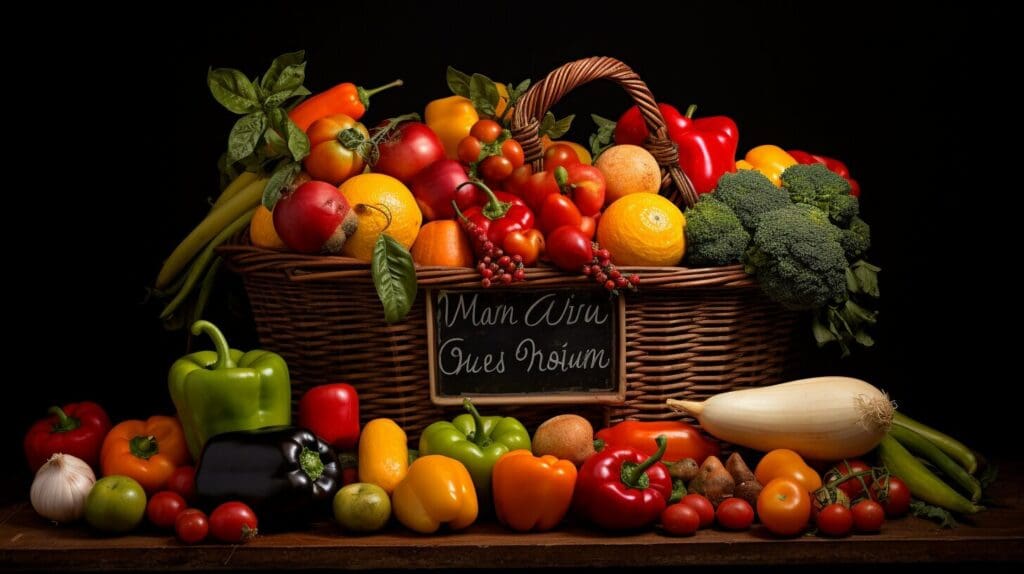
Practice Using Fruits and Vegetables in Spanish
Once you have learned the vocabulary for fruits and vegetables in Spanish, it’s important to practice using them in sentences. By practicing, you can reinforce your knowledge and improve your fluency in the language. Here are some examples of how to ask and answer questions about fruits and vegetables in Spanish:
Asking Questions:
- ¿Qué fruta te gusta? – What fruit do you like?
- ¿Cuál es tu verdura favorita? – What is your favorite vegetable?
- ¿Dónde compras las frutas y verduras? – Where do you buy fruits and vegetables?
Answering Questions:
- Me gusta la manzana. – I like apples.
- Mi verdura favorita es el brócoli. – My favorite vegetable is broccoli.
- Compro las frutas y verduras en el mercado local. – I buy fruits and vegetables at the local market.
By practicing these types of questions and answers, you can become more comfortable and confident in using the vocabulary for fruits and vegetables in Spanish.
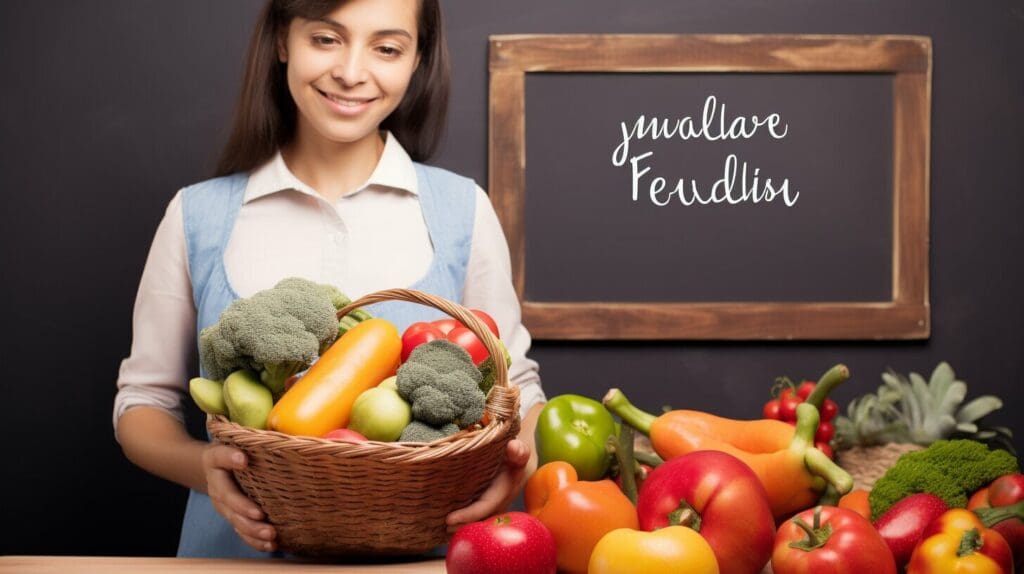
Table: Common Fruits and Vegetables Vocabulary in Spanish
| Fruit | Spanish Translation |
|---|---|
| Apple | Manzana |
| Banana | Plátano |
| Orange | Naranja |
| Strawberry | Fresa |
| Grape | Uva |
| Tomato | Tomate |
| Carrot | Zanahoria |
| Broccoli | Brócoli |
Regional Differences in Names
When learning how to talk about fruits and vegetables in Spanish, it’s important to be aware of the regional differences in names. While many words for fruits and vegetables are widely understood across Spanish-speaking countries, there can be variations in certain regions. These differences can be influenced by cultural, historical, and linguistic factors.
For example, the word for “potato” can vary between Latin America and Spain. In Latin America, the commonly used term is “papa,” while in Spain, it is more commonly referred to as “patata.” Similarly, the word for “tomato” in Latin America is typically “tomate,” whereas in Spain it is often called “jitomate” or “tomate de árbol.”
This regional variation extends to other fruits and vegetables as well. In some countries, you may encounter unique names or terms for specific produce. Familiarizing yourself with these regional differences can help you communicate effectively and avoid confusion when discussing fruits and vegetables with Spanish speakers from different areas.
| English | Latin America | Spain |
|---|---|---|
| Potato | Papa | Patata |
| Tomato | Tomate | Jitomate/Tomate de árbol |
| Avocado | Palta/Aguacate | Aguacate |
| Pineapple | Piña/Ananá | Piña |
As you continue to expand your vocabulary and explore the Spanish-speaking world, you may encounter even more regional variations for fruits and vegetables. Embracing these differences will not only deepen your understanding of the Spanish language but also enrich your cultural experiences.
Tips for Learning Vocabulary
Learning vocabulary is an essential step in mastering any language, including Spanish. When it comes to learning fruits and vegetables in Spanish, there are several effective strategies that can help you build your vocabulary and improve your language skills. Here are some tips to consider:
1. Use Flashcards
Flashcards are a versatile and effective tool for learning vocabulary. Create flashcards with the names of different fruits and vegetables in Spanish on one side and the English translation on the other. Practice regularly by flipping through the flashcards and testing yourself on the translations. This method can help you memorize the words and reinforce your knowledge.
2. Practice with a Language Partner
Find a language partner or a native Spanish speaker who is willing to practice with you. Take turns describing different fruits and vegetables in Spanish and ask each other questions. This interactive practice can help you improve your pronunciation, listening skills, and overall fluency.
3. Use Contextual Learning
Instead of just memorizing individual words, try to learn fruits and vegetables vocabulary in the context of sentences or phrases. This approach will help you understand how the words are used in real-life situations. For example, you can practice saying “I would like an apple” or “Where is the nearest market to buy tomatoes?” This way, you’ll not only learn the vocabulary but also how to use it in conversations.
By incorporating these tips into your language learning routine, you’ll be well on your way to mastering the vocabulary for fruits and vegetables in Spanish. Remember to practice regularly and stay committed to your language learning journey. ¡Buena suerte!
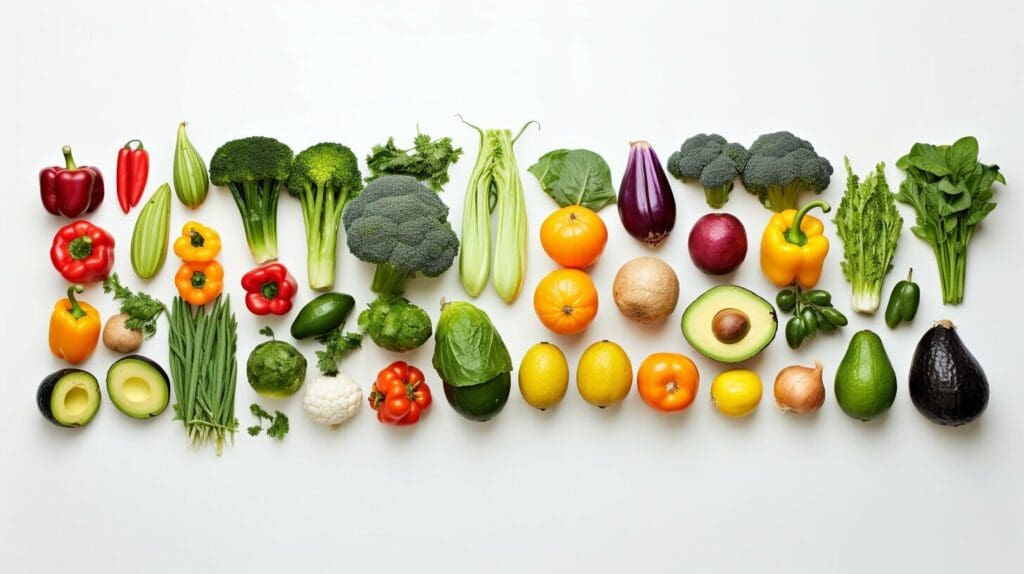
Table: Common Fruits and Vegetables Vocabulary
| English | Spanish |
|---|---|
| Apple | Manzana |
| Orange | Naranja |
| Banana | Plátano |
| Carrot | Zanahoria |
| Lettuce | Lechuga |
| Tomato | Tomate |
| Cucumber | Pepino |
| Watermelon | Sandía |
Shopping for Fruits and Vegetables in Spanish-Speaking Countries
If you plan to visit or live in a Spanish-speaking country, knowing how to talk about fruits and vegetables is essential for shopping at local markets or grocery stores. In many Latin American countries, produce stands are common, and you’ll need to communicate what you want to the employees. Being able to use the correct vocabulary for fruits and vegetables will make your shopping experience easier and more enjoyable.
When shopping for fruits and vegetables in Spanish-speaking countries, it’s important to know the names of the produce you’re looking for. Here are some common Spanish words for fruits and vegetables:
| Fruit | Spanish Word | Vegetable | Spanish Word |
|---|---|---|---|
| Apple | Manzana | Carrot | Zanahoria |
| Banana | Plátano | Cucumber | Pepino |
| Orange | Naranja | Tomato | Tomate |
| Grapes | Uvas | Lettuce | Lechuga |
Having these words at your disposal will allow you to communicate effectively and make sure you get the fruits and vegetables you need. It’s also helpful to know some basic phrases, such as “¿Cuánto cuesta?” which means “How much does it cost?” and “Quisiera…” which means “I would like…”. These phrases will help you navigate your way through the market and interact with the vendors.
So, before your next trip to a Spanish-speaking country, take some time to learn the vocabulary and phrases related to fruits and vegetables. It will enhance your cultural experience, make shopping easier, and allow you to fully enjoy the delicious produce that these countries have to offer.
Common Fruits and Vegetables in Spanish-Speaking Countries
When visiting Spanish-speaking countries, you’ll encounter a variety of fruits and vegetables that may not be as common in other parts of the world. Familiarizing yourself with these unique produce options can enhance your cultural experience and broaden your culinary horizons. Here are some examples of common fruits and vegetables in Spanish-speaking countries:
| Fruits | Vegetables |
|---|---|
| Mango | Tomato |
| Papaya | Avocado |
| Pineapple | Corn |
| Guava | Plantain |
| Passion fruit | Yucca |
| Dragon fruit | Chayote |
These are just a few examples, and the availability of fruits and vegetables may vary depending on the specific country and region. Exploring local markets and trying new produce can be a delightful adventure for your taste buds!
Keep in mind that the names of these fruits and vegetables may differ slightly in different Spanish-speaking countries. It’s always helpful to learn the regional variations to ensure clear communication and avoid any confusion while shopping or dining out.
Enjoying the Culinary Delights of Spanish-Speaking Countries
Visiting Spanish-speaking countries offers an incredible opportunity to indulge in the diverse culinary delights these vibrant cultures have to offer. From traditional dishes to fresh fruits and vegetables, you’ll be able to satisfy your taste buds with a plethora of mouthwatering options. Immersing yourself in the local cuisine is a fantastic way to experience the authentic flavors and cultural richness of these destinations.
When it comes to fruits and vegetables, Spanish-speaking countries boast an array of unique and delicious options. Picture yourself savoring the succulent sweetness of a juicy tropical mango in Mexico, or relishing the refreshing crunch of a perfectly ripe watermelon in Spain. Each country has its own specialty produce, highlighting its distinct flavors and culinary traditions.
To make the most of your culinary adventures, it’s essential to learn how to talk about fruits and vegetables in Spanish. By expanding your vocabulary, you’ll be able to communicate your preferences, inquire about local specialties, and truly appreciate the culinary treasures these countries have to offer. So whether you’re exploring the bustling markets of Colombia or indulging in the coastal delicacies of Peru, knowing the Spanish names of fruits and vegetables will enhance your gastronomic experiences.
| Popular Fruits | Popular Vegetables |
|---|---|
| Banana (plátano) | Tomato (tomate) |
| Strawberry (fresa) | Onion (cebolla) |
| Pineapple (piña) | Garlic (ajo) |
| Mango (mango) | Avocado (aguacate) |
As you embark on your culinary journey through Spanish-speaking countries, take advantage of the opportunity to sample the local flavors and expand your palate. Explore the traditional dishes, street food vendors, and local markets. Immerse yourself in the rich tapestry of flavors, aromas, and textures that these countries have to offer. By embracing the culinary delights and learning how to talk about fruits and vegetables in Spanish, you’ll create unforgettable memories and truly savor the essence of these remarkable destinations.
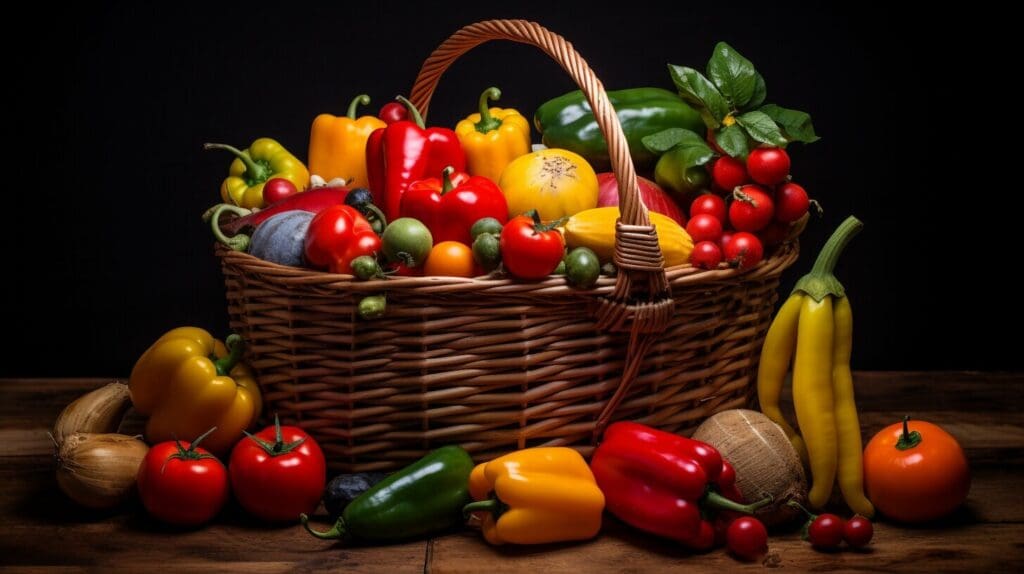
Diverse Spanish Immersion Programs
If you want to take your Spanish language skills to the next level, consider enrolling in a Spanish immersion program. These programs offer a fully immersive experience, allowing you to practice your language skills in real-life situations. Whether you choose to study in Spain, Latin America, or another Spanish-speaking country, a Spanish immersion program can greatly enhance your ability to talk about fruits and vegetables and communicate effectively in Spanish.
During a Spanish immersion program, you will have the opportunity to dive deep into the language and culture. You will be surrounded by native Spanish speakers, which will help you improve your listening and speaking skills. Immersion programs often include language classes, cultural activities, and opportunities to interact with locals, giving you a well-rounded learning experience.
One of the advantages of a Spanish immersion program is that you will be constantly exposed to Spanish, both in and out of the classroom. This constant exposure will accelerate your learning and make it easier for you to remember vocabulary related to fruits and vegetables. You will have the chance to practice ordering food at restaurants, shopping for produce at local markets, and engaging in conversations about food with fellow students and locals.
Benefits of Spanish Immersion Programs:
- Full immersion experience to practice Spanish in real-life situations
- Improved listening and speaking skills
- Language classes, cultural activities, and interaction with locals
- Constant exposure to Spanish, accelerating learning
- Opportunities to practice vocabulary related to fruits and vegetables
Overall, a Spanish immersion program is an excellent way to enhance your language skills and gain confidence in talking about fruits and vegetables in Spanish. Immersing yourself in the language and culture will not only improve your vocabulary but also deepen your understanding of Spanish-speaking countries’ culinary traditions. So why wait? Start your journey towards fluency and culinary exploration by enrolling in a Spanish immersion program today!
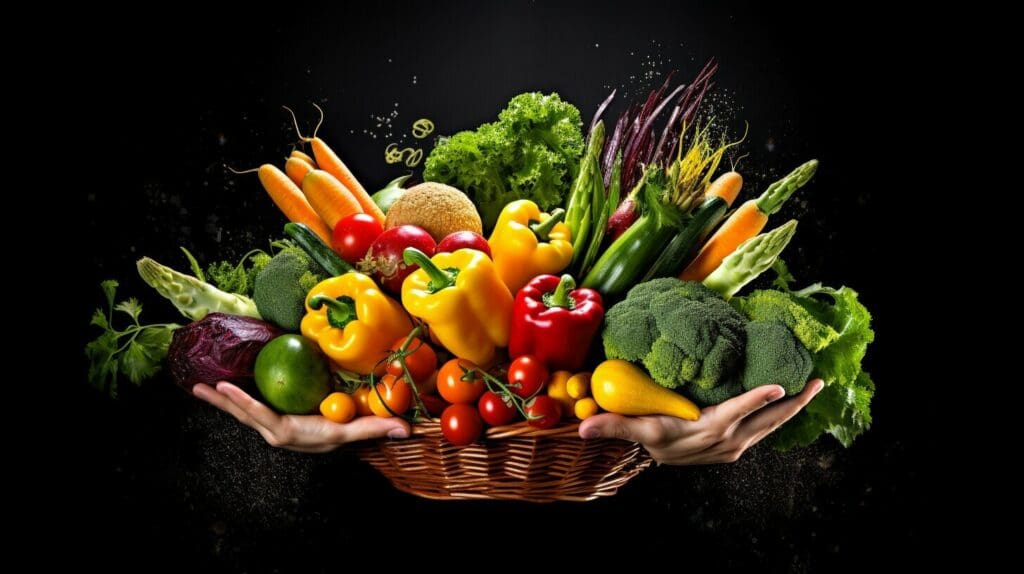
Conclusion
Learning how to talk about fruits and vegetables in Spanish is an essential step in becoming fluent in the language. By expanding your vocabulary and practicing using these words in context, you will be able to confidently navigate Spanish marketplaces and menus. Whether you are a beginner or an experienced Spanish learner, incorporating fruits and vegetables vocabulary into your studies will enhance your language skills and open up a world of culinary delights.
Remember to familiarize yourself with the names of common fruits and vegetables in Spanish to build a strong foundation. Practice using them in sentences to improve your fluency and confidence. Keep in mind that regional differences exist, so learning the variations can be beneficial if you plan to use your Spanish in a specific location.
Whether you plan to visit or live in a Spanish-speaking country, knowing how to talk about fruits and vegetables is essential for shopping at local markets or grocery stores. Being able to communicate your preferences and interact with employees will make your shopping experience easier and more enjoyable. Embrace the vibrant world of Spanish fruits and vegetables and savor the culinary delights that await you!
FAQ
What are some common fruits and vegetables in Spanish?
Some common fruits and vegetables in Spanish include bananas (plátanos), apples (manzanas), oranges (naranjas), tomatoes (tomates), carrots (zanahorias), and lettuce (lechuga).
Are there regional differences in the names of fruits and vegetables in Spanish?
Yes, there can be regional differences. For example, the word for “potato” can be “papa” in Latin America, while in Spain it’s more commonly called “patata.”
How can I learn the vocabulary for fruits and vegetables in Spanish?
To learn the vocabulary, you can use flashcards, practice with a language partner, or use online resources and apps that provide fruit and vegetable vocabulary exercises.
Why is it important to know how to talk about fruits and vegetables in Spanish?
Knowing how to talk about fruits and vegetables will be helpful when shopping at local markets or grocery stores in Spanish-speaking countries. It will also allow you to fully appreciate and enjoy the local cuisine.
What are some tips for learning fruits and vegetables vocabulary in Spanish?
Some tips include practicing regularly, using the words in context, creating mnemonic devices to remember the words, and immersing yourself in Spanish-speaking environments.
Where can I practice using fruits and vegetables vocabulary in Spanish?
You can practice by asking and answering questions about fruits and vegetables, participating in role-plays, or engaging in conversations with language partners or native speakers.
What are some common fruits and vegetables in Spanish-speaking countries?
Some examples include mangoes (mangos), avocados (aguacates), pineapples (piñas), papayas (papayas), and plantains (plátanos).
How can a Spanish immersion program help me improve my language skills?
Spanish immersion programs provide a fully immersive experience, allowing you to practice your language skills in real-life situations. This can greatly enhance your ability to talk about fruits and vegetables and communicate effectively in Spanish.
Where can I find Spanish immersion programs?
Spanish immersion programs are available in Spain, Latin America, and other Spanish-speaking countries. You can research and choose a program that best suits your needs and preferences.
How can learning about fruits and vegetables in Spanish enhance my language skills?
Learning about fruits and vegetables in Spanish expands your vocabulary and helps you become more fluent in the language. It also allows you to navigate Spanish marketplaces and menus with confidence.
Papas Fritas – French Fries
Puré de papas – Mashed Potatoes
Want to learn Spanish? We can help you!
Spanish courses in Argentina
Spanish courses in Lima
Spanish Courses in Mexico
Spanish courses in Santiago Chile
Learn Spanish Online

